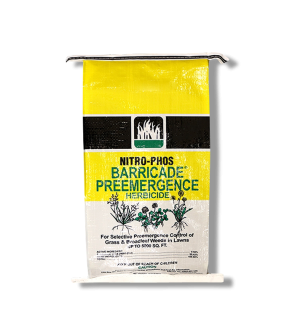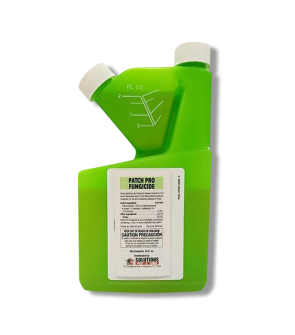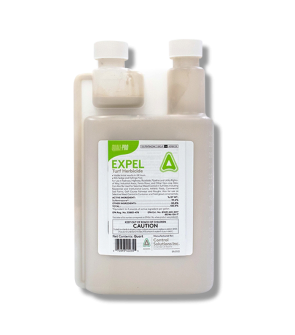How to Winterize Gardens
Most Effective Products
How to Winterize Your Ornamental Landscape
This page is a professional DIY guide for preparing your ornamental garden for the upcoming winter season. Here in this article you can find effective products and recommend tips for the care of your garden during winter. Follow this guide and use the recommended steps and products for the safe protection of your garden throughout the winter until spring.
It's easy for homeowners to assume that winter is the time for letting your flower garden go, but though maintenance is different than that of earlier seasons, there is still tasks needed on your end. In warmer climates, winters are not prone to freezing temperatures and only occasional blasts of cooler air. However, even if you live in area with snow or below freezing temperatures it is still essential to prepare your garden for winter during the fall.
As most experienced or beginning homeowners know, winter brings freezing temperatures, snow, and harsh winds all of which can render a garden completely useless. These weather patterns can also erode the first layer of soil, which can cause the plant to lose essential nutrients or expose their roots to insects or bacteria. Diseases that present themselves throughout the winter can make their way into spring as well.
The first step in proper winter care is knowing when to begin your preparations. No matter where you live proper winter care is seen in the first half of October to mid-November. Ensure this is done at least several weeks before frost begins in your region. It should be noted that grounds covered in snow or frost cannot be treated for winterization. Read on to learn how to prepare your ornamental plant bed for the upcoming winter season thus increasing its health and survival for the spring season.
Eliminate Weeds through Spot Treatments

Since weeds compete with ornamental foliage for nutrients, remove as many emerged weeds with a glove covered hand or a garden hoe before the ground becomes frozen. This action will also help to loosen potential dirt clods or compacted soil, which increases the following applications methods listed in this article.
For difficult to remove weeds, we recommend performing a spot treatment with Expel Turf Herbicide prior to planting an area for ornamentals and flowers. Expel Turf Herbicide is a suspended concentrate liquid herbicide that penetrates the surface of broadleaf weed leaves then travels down into its roots for complete elimination within 24 hours. This product is labeled to control weeds around container and field grown ornamentals. Do not use this product on food producing trees, vines, or plants. Prior to application make sure to have a cardboard box or other protective covering as Expel Turf Herbicide is soil active and may damage these desired plants upon emergence.
Determine how much Expel Turf Herbicide to use by calculating the square footage of the treatment area. To find this, measure the length and width of the treatment site in feet then multiply (length X width = square footage). Use 0.092 to 0.275 oz. of Expel Turf Herbicide per gallon of water per 1,000 sq. ft. in established container, field nursery stock plants or landscape plants. For sedges and perennial weeds, use 8 to 12 oz. of product per 10 gallons of water per acre. Multiple applications may be made if needed as long as total amount applied in one year does not exceed 12 oz. of Expel Turf Herbicide per acre.
To mix, apply half the amount of water into a one gallon handheld pump sprayer, pour in the measured amount of Expel Turf Herbicide, then add the remaining half of water. Close the spray tank lid and shake to mix solution. Adjust the spray nozzle to a fan setting then coat the base of weeds until wet, but not to the point of run-off. To avoid damage to desired foliage surround the weed with a cardboard box to prevent unnecessary driftage or spray droplets. If product drifts onto desired plants then apply overhead irrigation to the foliage to wash Expel Turf Herbicide from plant surfaces onto soil.
Remove Dead Foliage and Debris

If your flower garden is full of a variety of plants, it can make a wide range of fallen plant debris like leaves, flower petals, and sticks. The first blast of cold air will also kill a majority of plants in your garden leaving the previously mentioned decaying materials on or around the foliage.
Some pests such as beetle larvae are able to survive the the winter if fallen plant debris remains. Consequently, this can further worsen into diseases and fungi activity due to moisture buildup under fallen leaves. To prevent disease growth and encourage survival of garden plants then rake any decaying of fallen foliage debris off the ground.
Prune decaying leaves, flowers and petals, and damaged stems off the plant. It is best to stop pruning shrubs at the beginning of November as trimmings after this can encourage late plant growth. Continue raking until the ground becomes covered in frost or snow. For other types of foliage, prune until mid-November.
Water Until Ground Freezes

Before the ground becomes frozen and hard, make sure the plants in your flower bed are deeply watered to help them get through the long cold months ahead.
You may have to switch to watering with a garden hose since freezing temperatures can cause sprinklers to rupture underground. Once a week, deeply water with an inch of irrigation in the early morning to allow garden plants to have enough time to absorb moisture.
Foliage during the winter is slow-moving so water applications in the evening can generate fungi and disease growth. If you find these diseases or fungi growth then you may remove them with Patch Pro Fungicide. This emulsifiable concentrate functions as a systemic fungicide meaning it will remove fungi and diseases in your field nursuries and landscape plantings without harm. In landscapes, apply 6 to 8 oz. of product per 100 gallons of water every 21 days. Wait until solution is dry before applying irrigation methods.
Replenish Soil and Treat

With excessive winds and rainfalls, the soils of ornamental garden beds needs to be replenished. Whether the soil is your own creation or store bought you will need to remove existing soil from gardens. Remove a 2 to 3 inch band of soil from the base of established trees, shrubs, and perennial plants. A general rule of thumb is to remove 1/3 of your soil each year mixing with new soil in with the old. Careful mix these soils together without harming existing plant roots.
Once the soil is replaced you can mix in a granular pre-emergent herbicide. We recommend using a granular pre-emergent since it slowly releases nutrients over time to fight against weeds that not yet emerged. Products such as Barricade Granular Pre-Emergent Herbicide contains a granule formulation to continue to eliminate various broadleaf and grassy weeds for up to 60 days.
Apply 2.5 to 5.94 lbs. of Barricade Granular Pre-Emergent Herbicide per 1,000 sq. ft. of ornamentals. Broadcast the products granules with a hand spreader or broadcast spreader depending on the size of the garden. Once applied, active Barricade Granular Pre-Emergent Herbicide with 0.5 inches of water.
Make sure to apply this product by mid-November or at least several weeks before ground is frozen to prevent additional stresses to your garden. Do not use this product on overseeded areas within 60 days after seeding.
Cover Trees, Shrubs, and Ornamentals

Wait to cover your gardens trees, shrubs, and ornamentals until soil is replenished and pre-emergent herbicide has been applied. Apply a burlap or frost tolerant fabric sheet around your desired foliage to the point where it is not exposed to weather nor is choking.
Sensitive potted plant species will do well to be brought inside of garages, sheds, of your homes. Covering these plants may prove to be ineffective and can lead to death of foliage.
Key Takeaways
What To Do With Dead Foliage in Ornamental Gardens During Winter
- There is a high debate of whether to use fallen leaves and other plant debris as compost or as a protective layer in gardens against winter weather. However, it should be noted leaving any type of decaying or fallen plant debris increases the chances of fungi, disease, and other stresses to turf.
What is the First Step in Preparing Ornamental Gardens for Winter
- We recommend performing a spot treatment with Glyphosate 4 Plus Weed Killer Concentrate to eliminate emerged weeds in gardens. To avoid indirect spray applications on garden plants insert a cardboard box between weed and plants.
When Should Winterization in Ornamental Gardens End?
- For general pesticide products and pruning it is best to cease by mid-November. Performing either of these methods after this period can cause plants to bloom out of season or cause additional stresses leading to plant death.













































































































































































































































































































































































































































































































































